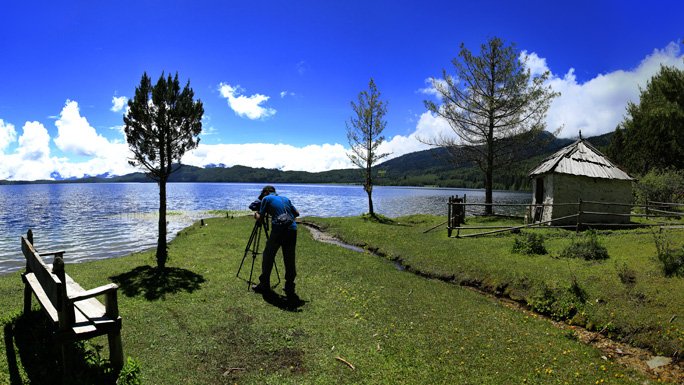Tengboche Monastery is one of the most famous monasteries of Nepal, probably because of its unrivalled backdrop of Mount Ama Dablam. The monastery is the leading Buddhist centre in the Khumbu with a residing Rinpoche who blesses pilgrims, mountaineers and travelers to the area.
Every October, Tengboche Monastery hosts the colorful Mani Rimdu festival, which is a culmination of Buddhist celebrations with a religious gathering, songs, ritual dances and enactments of legends. Visitors are always welcomed to partake in the festivities and many trekkers time their trek to coincide with the festival. Tours of the monastery are conducted every afternoon. Tengboche lies on the very popular trek route to the Everest region.
Atop a hill across Imja Khola, Tengboche is the most common night halt after Namche. The monastery is perched on a high ridge across the canyon from Khunde. This Buddhist monastery was burnt down in 1989 and rebuilt replacing the old building with a more solid structure.
Pines, azaleas and colourful mountain rhododendrons surround the attractive gompa (monastery), with a stunning panoramic view of Everest, Lhotse and Ama Dablam. Tengboche has mRara Lake at 2,990 m, is the deepest lake in Nepal and also one of the most pristine. Surrounded by green hills on all sides, covered in juniper trees, one can camp by the sparkling waters of the lake. Go boating in the clear waters, hike to nearby hills for a closer view of the mountains and lake, get acquainted with the charming local people, or just walk around the large lake watching out for wild flowers or a rare bird along the way.
The park is surrounded by alpine coniferous vegetation and offers a representative sample of the region’s flora and fauna. More than 500 different kinds of flowers, 20 different species of mammals and 214 species of birds can be observed in the Rara National Park. As for life in the lake, the snow trout is one of the fish varieties recorded so far.
The rich vegetation of the park isupports diverse species of wildlife including the endangered red panda, musk deer, Himalayan black bear, leopard, jackal, Himalayan tahr, yellow-throated martin, wild dog, wild boar, common langur, rhesus macaque and common otter. During winter the park abounds in bird varieties like coots, great-crested grebe, black-necked grebe, red crested pochard, mallard, common teal, merganser and gulls. Migrant water fowl and gallinaceous birds can also be seen during certain seasons.
Rara in the far northwestern part of Nepal is the smallest national park in the country, while the Rara Lake is Nepal’s biggest lake. The lake is 167 m deep at some places, and drains into the rivers Mugu Karnali via Nijar Khola. Chuchemara Hill at 4,087 m is the best vantage point to enjoy magnificent views of the deep blue lake , the forested hillsides and the snow capped peaks around it.
The easiest means to reach Rara is to take a flight from Nepalgunj to Jumla, from where your destination is 2-3 days walk away. You could also start this refreshing trek in the hilly village of Jumla where apple orchards spread out over the hills.
The trek leads through remote countryside toward the Tibetan border. A journey into the Jumla region and the beautiful Rara Lake is probably one of the most fascinating treks in the Himalaya undisturbed by hordes of trekkers as one finds on other trek routes.
The best time to visit the park is in the spring, summer and Autumn. As more people are now visiting the park, tourist services and infrastructure have developed over the years. However, for a great experience, it is still advisable to be self sufficient if you are traveling alone. Lake Rara is also a popular pilgrimage site for Nepalis.
From Tengboche you can continue on to Pheriche, Kala Pattar and the hamlet of Gorakshep. From here, the Everest Base Camp is easily accessible, as is the summit of Kala Pattar (5,545 m), from where one gets outstanding views of Mt. Everest. However, you must take time to acclimatize and avoid rapid gain in altitude to avoid altitude sickness.






